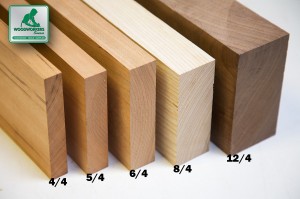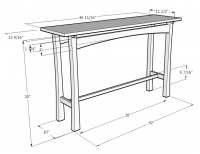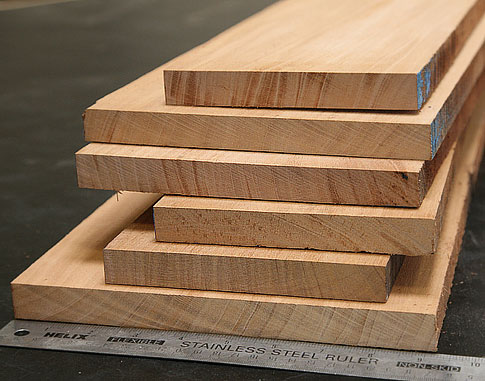
$8.00 ea.
48 U.S. Ground Service
Delivery & Pick-Up Options
Log in to see delivery dates
Ready NEXT DAY - Tempe, Phoenix or Tucson
Schedule it during checkout
Why Choose Cherry?
American cherry lumber enchants with its deep, warm tones and refined silky grain. Celebrated for its exceptional workability and resilience, it epitomizes timeless elegance and the rich heritage of American woodworking.
Get your hands on a wood you've never tried before! It's simple. Samples are milled on all sides to the standard size of 1/2'' X 3'' X 6'', as determined by The International Wood Collectors Society, and include the shipping cost within the 48 U.S. Each one is labeled with the botanical and common names. Use these to test finishes and stains, to compare color and grain characteristics, etc.
| Thickness | 1/2" (≈ 1/2" approx) |
| Width | 3" |
| Length | 6" |
| Grade | Samples are milled on all sides, cut square and sanded; wood is a product of nature with inconsistencies from piece to piece. Use species samples as a guide, not a perfect representation. |
Woodworkers Also Recommend These
3
lbs /Bd. Ft.Wood Texture
Ease of Finishing
Reddish brown with a golden luster. Freshly cut cherry is often very pale, but the wood oxidizes to its famously favorable rich brown red in time.
Reaches heights of up to 100 feet, about 80 feet average, with a tall trunk of about 24" in diameter.
Black cherry, Capulin, Cherry, Chisos wild cherry, Choke cherry, Edwards Plateau cherry, Escarpment cherry, Gila choke cherry, Mountain black cherry, New England mahogany, Plum, Rum cherry, Southwestern chokecherry, Whiskey cherry, Wild black cherry
Furniture, cabinets, joinery, intarsia, veneer, interior millwork, small accessories
The Joys of Building with Great Woods
Understanding hardwood lumber starts right here with these wacky fractions.
If you're expecting perfect clear lumber 100% of the time, you're in for a surprise. Here's a summary of the hardwood lumber grades and what to expect from them.
Board feet isn't your everyday kind of math, but these three simple steps make it easy to figure out your project.
Here's a handy (and free) Excel worksheet that helps you estimate the lumber needs for your project.
Are woods poisonous? Hazardous to use in cutting boards or baby cribs? Find out here.
Wood is like a sponge, and it's always in a state of absorbing or releasing moisture to stay equalized with its environment. The problem with that is it also swells and shrinks. Here's what you need to know to protect your project.















